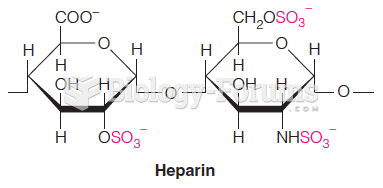Answer to Question 1
Correct Answer: 1,2
Rationale 1: Lepirudin is contraindicated if the aPTT is above 2.5.
Rationale 2: Lepirudin is contraindicated in clients who are actively bleeding.
Rationale 3: There is no contraindication to the use of lepirudin in clients with egg allergy.
Rationale 4: A surgery 3 years ago is not a contraindication to the use of lepirudin, nor is absence of the spleen.
Rationale 5: There is no contraindication to the use of lepirudin in those who drink coffee.
Global Rationale: Lepirudin is contraindicated if the aPTT is above 2.5 or if the client is actively bleeding. There is no contraindication to the use of lepirudin in clients with egg allergy or for those who drink coffee. A surgery 3 years ago is not a contraindication to the use of lepirudin, nor is absence of the spleen.
Answer to Question 2
Correct Answer: 2
Rationale 1: If drawn immediately, the aPTT will reflect the level from the lower dosage.
Rationale 2: The most accurate representation of aPTT from the new rate will occur at least 6 hours after a rate increase.
Rationale 3: At 1530, the aPTT will reflect a mix of the old rate and the new rate.
Rationale 4: Waiting until 0800 the next morning is dangerous because the heparin dose may be too high.
Global Rationale: The most accurate representation of aPTT from the new rate will occur at least 6 hours after a rate increase. If drawn immediately, the aPTT will reflect the level from the lower dosage. At 1530, the aPTT will reflect a mix of the old rate and the new rate. Waiting until 0800 the next morning is dangerous because the heparin dose may be too high.







